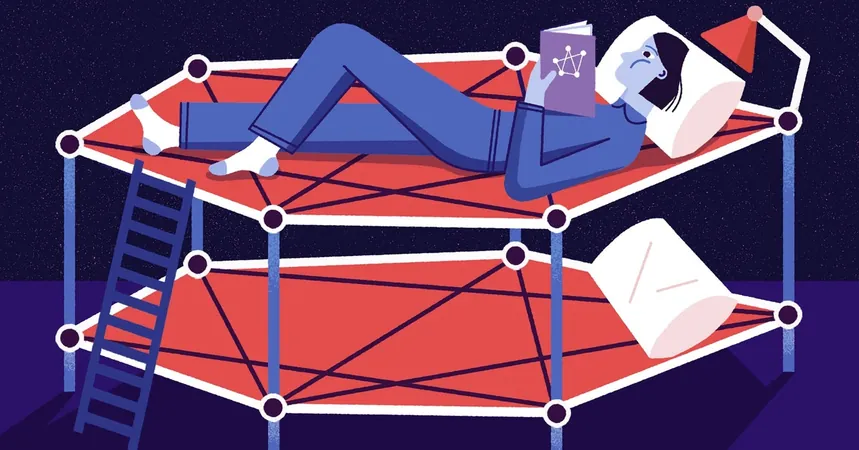
BREAKING: Mathematicians Expose the Shocking Flaw in the ‘Bunkbed Conjecture’!
2024-11-24
Author: Ying
Introduction
In a stunning turn of events, mathematicians have officially debunked the so-called ‘bunkbed conjecture,’ a theory previously thought to be intuitive and widely accepted in the field of probability. What does this mean for mathematics and physics?
The Bunkbed Conjecture Explained
The bunkbed conjecture posited that the likelihood of finding a path along the lower level of a two-tiered graph, or 'bunkbed,' was always greater than or equal to the likelihood of finding a path that transitions to the upper level. For years, this concept seemed logical: after all, navigating a single level should intuitively be easier than moving between levels. However, new research has shattered this assumption, revealing a complex reality that challenges fundamental beliefs held by mathematicians for decades.
Connection to Percolation Theory
This theory resonates within a branch of mathematics known as percolation theory, which studies how substances like fluids move through porous materials—an analogy often likened to water flowing through a sponge. The acceptance of the bunkbed conjecture would imply significant truths about fluid dynamics and could provide valuable insights into various related physics problems. If proved correct, it could have reshaped the scientific understanding of how fluids interact with solids.
Skepticism and Research
However, doubts lingered in the mind of Igor Pak, a mathematician from UCLA. Having always questioned the validity of long-accepted conjectures, Pak believed that the bunkbed conjecture was overly simplistic. With skepticism rooted deeply in his belief that some conjectures are born not from rigorous investigation but out of wishful thinking, he decided to put the bunkbed theory to the test.
The Research Team's Breakthrough
In 2022, alongside graduate student Nikita Gladkov and fellow researcher Aleksandr Zimin, Pak embarked on a mission to disprove the conjecture. Their initial attempts were met with frustration, but they soon harnessed inventive programming to conduct a comprehensive search across various graph configurations. Drawing from their lively discussions—often occurring even amidst favorite rock concerts—they devised a novel framework to analyze and manipulate hypergraphs to challenge the original conjecture.
The Counterexample
The breakthrough came when they reconstructed a counterexample based on their findings. They replaced specific edges in a hypergraph with a vast assembly of points and edges, ultimately creating a monumental graph of 7,222 vertices linked by an astonishing 14,422 edges. Their calculations revealed a surprising outcome: the probability of finding an available path to the upper level was actually a staggering 1 in 106,500 times more likely than finding a path on the lower level, definitively debunking the bunkbed conjecture.
Implications of the Discovery
With this revelation, the significance of the discovery stretches beyond mathematics—impacting fields such as physics and fluid dynamics. The implications for scientists, engineers, and mathematicians alike are profound. Will this spark a new wave of inquiry into other long-held beliefs? Only time will tell, but one thing is for sure: the academic landscape will never be the same.
Conclusion
Stay tuned for more updates as this exciting development unfolds in the world of mathematics!


 Brasil (PT)
Brasil (PT)
 Canada (EN)
Canada (EN)
 Chile (ES)
Chile (ES)
 España (ES)
España (ES)
 France (FR)
France (FR)
 Hong Kong (EN)
Hong Kong (EN)
 Italia (IT)
Italia (IT)
 日本 (JA)
日本 (JA)
 Magyarország (HU)
Magyarország (HU)
 Norge (NO)
Norge (NO)
 Polska (PL)
Polska (PL)
 Schweiz (DE)
Schweiz (DE)
 Singapore (EN)
Singapore (EN)
 Sverige (SV)
Sverige (SV)
 Suomi (FI)
Suomi (FI)
 Türkiye (TR)
Türkiye (TR)